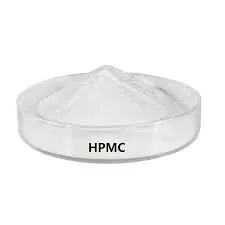
ජූලි . 27, 2024 11:02 Back to list
Comparison of HEC and HPMC in Pharmaceutical Applications and Their Performance Characteristics
HEC vs HPMC A Comparative Analysis of Hydroxyethyl Cellulose and Hydroxypropyl Methylcellulose
Hydroxyethyl cellulose (HEC) and hydroxypropyl methylcellulose (HPMC) are two widely used cellulose derivatives employed across various industries, including pharmaceuticals, food, and cosmetics. While they share certain properties, they also exhibit distinct characteristics that make them suitable for different applications. This article aims to explore the similarities and differences between HEC and HPMC, shedding light on their compositions, properties, and applications.
Composition
Both HEC and HPMC are derived from cellulose, a natural polymer obtained from plant cell walls. The fundamental difference lies in their chemical modifications. HEC is prepared by substituting a portion of the hydroxyl groups in cellulose with ethylene oxide, resulting in a polymer that retains some of its natural characteristics while enhancing its solubility in water. On the other hand, HPMC is obtained by reacting cellulose with propylene oxide and methyl chloride, leading to a compound that combines hydroxypropyl and methyl groups. This unique structure provides HPMC with remarkable water retention and thickening properties.
Solubility and Viscosity
One of the key differences between HEC and HPMC is their solubility in water. HEC is typically soluble in both hot and cold water, forming a clear and colorless viscous solution, which is beneficial for applications requiring transparency. HPMC, while also soluble in water, exhibits varying solubility based on its degree of substitution. Low-substitution grades of HPMC may dissolve more readily in cold water, whereas higher-substitution grades might require heat for complete dissolution.
Viscosity is another area where HEC and HPMC diverge. HEC generally produces a lower viscosity compared to HPMC when used at equivalent concentrations. This is particularly advantageous in applications where a lower viscosity is desired, such as in certain cosmetic formulations. HPMC, with its superior thickening ability, is often preferred in formulations that require enhanced texture and stability.
hec vs hpmc

Applications
Both HEC and HPMC find extensive applications across several industries. In the pharmaceutical sector, HPMC is a favored excipient for controlled-release formulations and tablet coatings due to its excellent binding and film-forming properties. HEC, meanwhile, is commonly used in topical products, such as gels and ointments, where its ability to provide a smooth texture is advantageous.
In the food industry, HPMC serves as a food additive, functioning as a thickener and stabilizer in various products, including sauces and dressings. It is also utilized in gluten-free baking to improve texture and moisture retention. HEC, though not as commonly used in food products, can still act as a stabilizer and emulsifier, particularly in low-fat food formulations.
In cosmetics, both HEC and HPMC are employed for their thickening and film-forming properties. HPMC is particularly popular in lotions and creams, where its ability to enhance the sensory feel is desired. HEC, with its skin-conditioning properties, is also utilized in moisturizers and cleansing products.
Conclusion
In summary, HEC and HPMC are versatile cellulose derivatives that play vital roles in various industries. While both are effective as thickening agents and stabilizers, their differing solubility, viscosity, and applications make them suitable for specific uses. Understanding the distinctions between HEC and HPMC can aid formulators in selecting the appropriate polymer for their products, ultimately leading to improved quality and performance. As industries continue to evolve, these cellulose derivatives will likely remain integral to the development of innovative formulations.
-
What Is HPMC: Meaning,Applications
NewsApr.02,2025
-
Redispersible Polymer Powder (Rdp): Uses, Price, And Suppliers
NewsApr.02,2025
-
Hydroxyethyl Cellulose (Hec): Uses, Suppliers, And Buying Guide
NewsApr.02,2025
-
Hpmc (Hydroxypropyl Methylcellulose): Applications, Suppliers, And Buying Guide
NewsApr.02,2025
-
Guide to Mortar Bonding Agent
NewsApr.02,2025
-
Buying Guide to Redispersible Powder
NewsApr.02,2025







